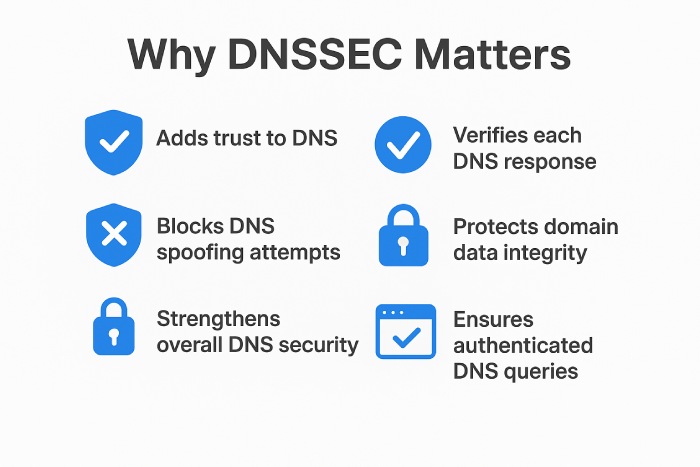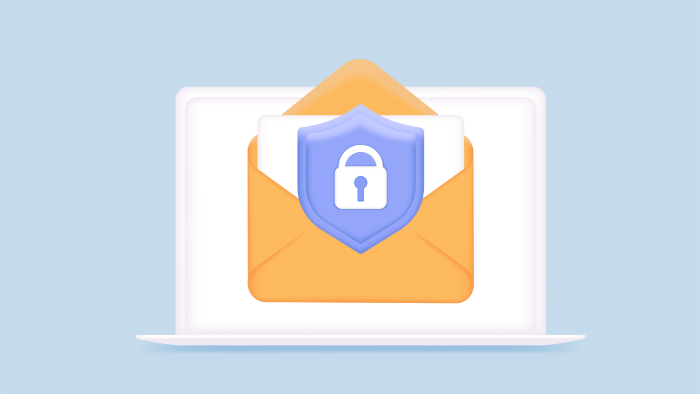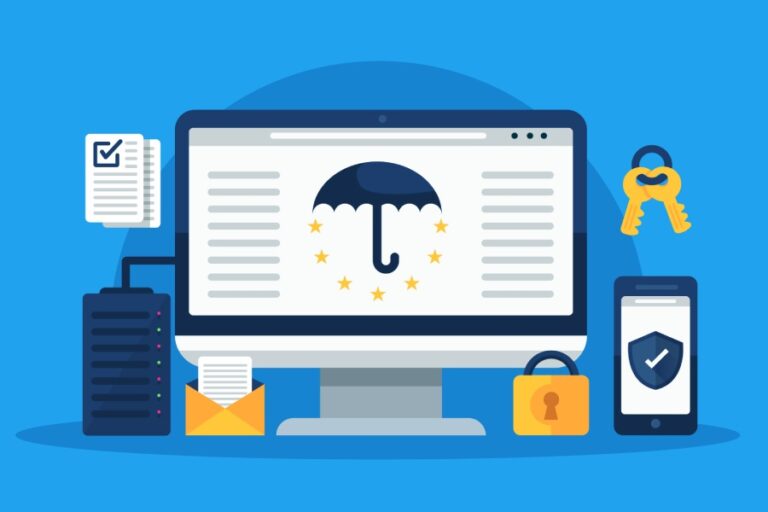DNSSEC: The ultimate shield for your domain’s security
Back in the 1980s, when DNS was created, the entire concept of the internet was very limited. Now, almost four decades later, the internet has become the backbone of almost every organization’s existence, especially businesses, government, and even individual users. It has changed the way we communicate, shop, work, and run essential services, so much so that even a small disruption can create chaos, cause financial loss, or put people at risk.
Since the core of the internet and the digital world we know today has never been rooted in security, cyberattackers today exploit these gaps and target the weakest points of the system. DNS is one of those weak spots.
The problem with DNS is that it was built to answer queries quickly, not securely. It simply takes a domain name, looks for the matching IP address, and returns whatever information it finds, without even checking whether that information has been altered or forged. So, if an attacker manages to intercept and manipulate the DNS, they can easily redirect your users who are trying to reach your website to a fake one.
But thanks to DNSSEC (Domain Name System Security Extensions), that missing layer of trust and verification is finally added to DNS. Now, let’s dig deeper and understand what exactly DNSSEC is and how it protects your domain.

What is DNSSEC?
Since even your DNS is no longer secure and can be leveraged to pull off attacks like DNS spoofing or cache poisoning, DNSSEC was introduced as a much-needed layer of verification for the entire system. This security protocol ensures that the DNS information your users receive is actually coming from your domain and hasn’t been changed by anyone along the way.
It does so by adding a digital signature to your DNS records. What these signatures do is that they act as proof that the DNS data is actually coming from a legitimate DNS server, authorized by you, and not manipulated by an attacker. So, when someone tries to visit your website, their DNS resolver doesn’t just accept the first response it gets. Instead, it checks the attached signature to confirm that the information is genuine and hasn’t been tampered with during transmission.
If the signature is valid, the resolver knows that the DNS response is valid and leads the users to a legitimate website instead of the one created to dupe them. But if it doesn’t match, the response is rejected because it’s considered unsafe.

This is like a simple verification process that occurs even before the user reaches your website. And when you add this layer of security to your domain, you significantly reduce the chances of anyone altering your DNS information or redirecting your traffic without your knowledge. In short, DNSSEC makes sure the DNS information people receive about your domain is real and hasn’t been tampered with.
How does DNSSEC work?
Typically, what DNS does is take a domain name and return the IP address linked to it. So, when a user types your domain name in their browser, the DNS resolver looks it up and returns the IP address it finds, without verifying whether it is legitimate or tampered with. This lack of verification gives attackers the chance to slip in fake DNS information or redirect users to harmful websites without anyone noticing.
But then, DNSSEC fixes this problem by adding a basic check to the entire process. So, when you implement DNSSEC for securing your domain, it adds a cryptographic signature to your DNS records, which contains the private key. So when someone tries to visit your website, the DNS resolver gets both the DNS record and the signature.

Before trusting the first response that DNS sends, the resolver then turns to your domain’s public key to verify that the signature is valid. If the signature matches the DNS data, it confirms that the information is genuine and hasn’t been changed by anyone. Only then does the resolver allow the user to reach your actual website.
But if the two keys do not match, the resolver assumes that the DNS data has either been altered or intercepted by an attacker, so it immediately rejects it. This stops users from being redirected to fake or harmful sites.
This quick verification step might seem insignificant or unnecessary at first, but it plays a major role in protecting your domain. It ensures that no one can slyly replace your DNS information or redirect your traffic without being caught. So, even if an attacker tries to add fake data to the DNS, the mismatch between the signatures would be a clear giveaway that something is not right, and the site cannot be trusted.
Why do you need DNSSEC?
Today, attackers no longer limit themselves to targeting your emails and website; they go to the very core of your digital existence— your DNS. If they can manipulate your DNS records, they can easily lead your customers to fake websites, steal sensitive information, or intercept traffic without raising any alarms. And because traditional DNS has no way to verify whether a response is genuine, these attacks can happen quietly and go unnoticed.

Here’s how DNSSEC steps in to fill this gap and secure your domain:
It ensures that no one messes with your DNS
With DNSSEC, your DNS records are protected with digital signatures. So if anyone tries to modify or replace them, it gets detected immediately. Attackers can’t quietly change your IP address or redirect users anymore.
It prevents users from falling prey to fake websites
Before sending someone to your website, the resolver checks whether it can be trusted or not. While DNS by itself does not really check anything, DNSSEC adds that missing link. It ensures that the DNS response hasn’t been changed or injected by an attacker. If something looks suspicious, the resolver blocks it instead of sending the user to a fake or harmful website. This way, your customers always land on the real version of your site and not a fraudulent one, especially designed to deceive your clients.
It fills one of the biggest gaps in security
As a business, you might secure emails, applications, and servers, but chances are you overlooked DNS security. DNSSEC fixes this by adding a verification step to your DNS data, making it much harder for anyone to tamper with it. Closing this gap fixes the most commonly ignored vulnerability that exposes you and your users to serious risks. DNS patches this weak point by making sure that only authentic DNS information is accepted.

It protects your brand and builds user trust
If your clients land on a website that looks like yours but isn’t actually yours, it can cause serious problems. They may enter their details, make payments, or log in without realizing they’re on a fake page. This puts them at risk and damages your brand identity. But DNSSEC prevents this by ensuring that your users always reach your legitimate website whenever they type your domain name. These simple steps spare you from the damage caused when users are tricked into fake sites. It keeps your customers safe and helps maintain trust in your business.
What happens if you don’t use DNSSEC?
As you know, DNS is not inherently secure, which means you have to resort to external measures to protect it. Without DNSSEC, your DNS resolver has no way to verify that the information it receives is authentic or hasn’t been tampered with. This gives attackers a clear way in to change your DNS data, redirect your users to fake websites, or intercept important information. And the worst part is that all of this scanning happens without you even noticing, because DNS itself doesn’t check anything.
So, when your DNS isn’t protected by the right tools, an attacker can make a fake version of your website look completely legitimate. When they land on the fake website, they are more likely to divulge their sensitive information like login credentials, card details, or other important information.

This puts your customers at serious risk and even harms your brand reputation. People may blame your business for the breach, even though the attack happened at the DNS level. To add to this, you might even face direct consequences such as financial losses, service disruptions, and a long recovery process.
Clearly, DNSSEC is no longer a “good-to-have” security protocol; it is an essential layer of security that your domain needs. By adding this verification step to your DNS, you safeguard your users, your brand, and the overall integrity of your online presence.
To further strengthen domain protection beyond DNSSEC, implementing SPF, DKIM, and DMARC ensures that your emails cannot be forged, helping prevent phishing, spoofing, and unauthorized use of your domain.If you want to protect the very foundation of your digital presence, this is your sign to implement Domain Name System Security Extensions for your domain.







